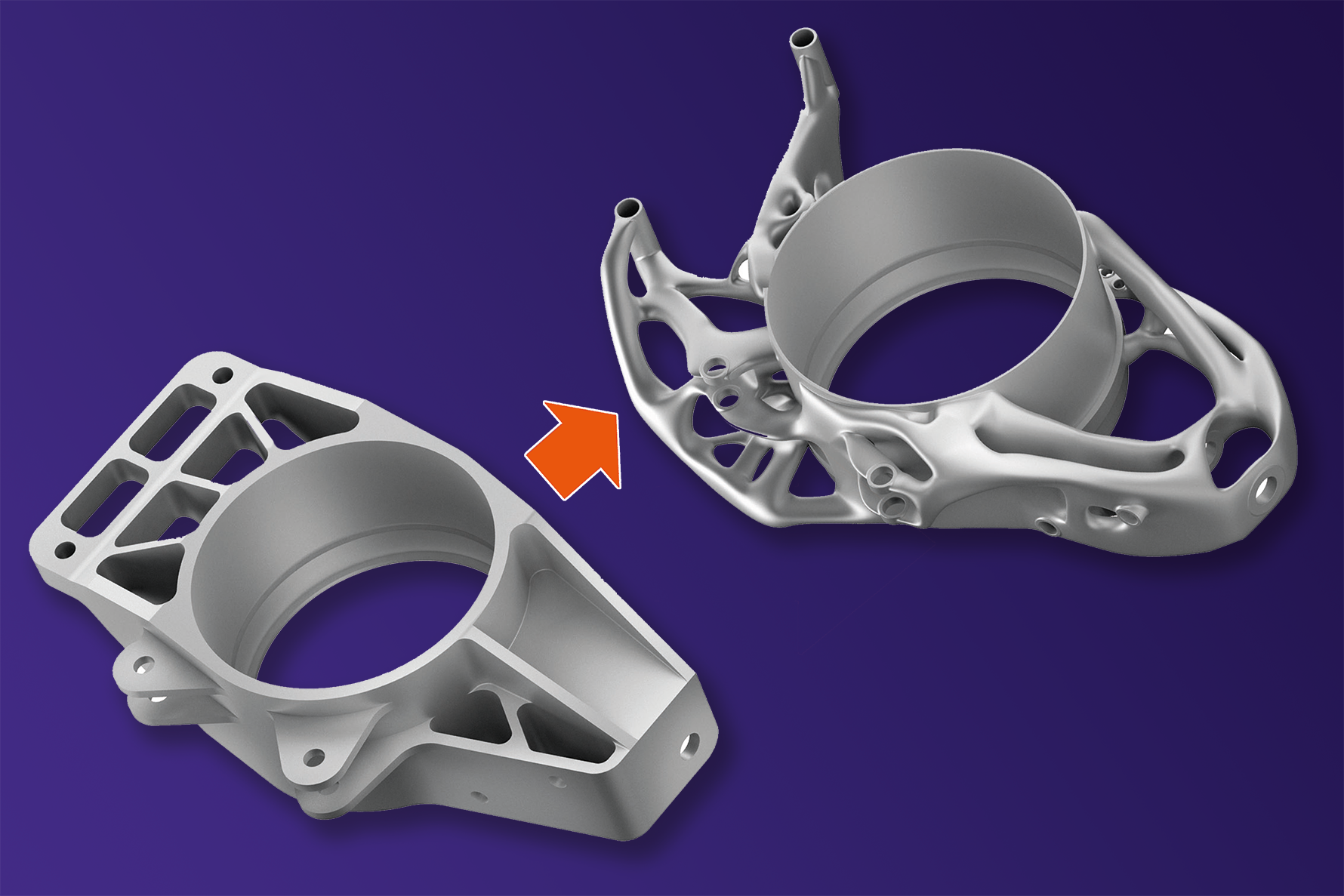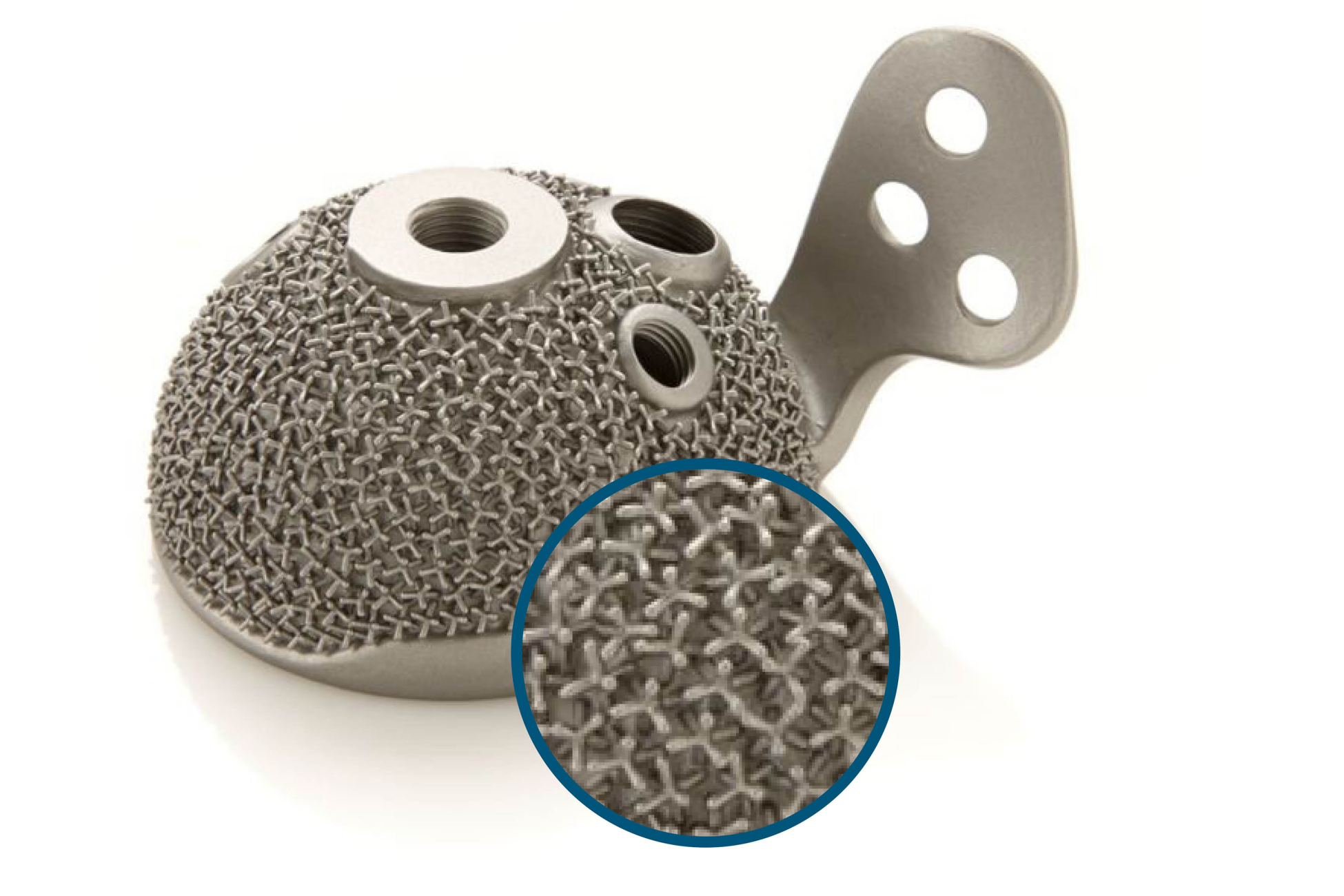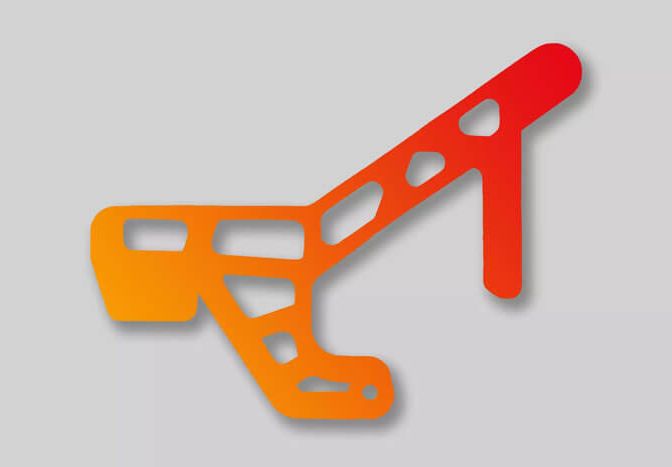The acetabular cup consists of a solid, shell-shaped head with a surface of hundreds of tripods. The tripods are filigree, cross-shaped anchors that later ensure the connection of implant and bone in the body. In the manufacturing process, the acetabular cup was printed with wax and the tripods were glued to the cup by hand. This part of the work had to be done by hand and was therefore very laborious.
3D printing with wax allowed the tripods to be placed with accuracy to the tenth of a millimeter. As a result, the mechanical connection between the tripods and the femoral head is secure. This brings a continuous process and the throughput and personnel costs could be reduced.






